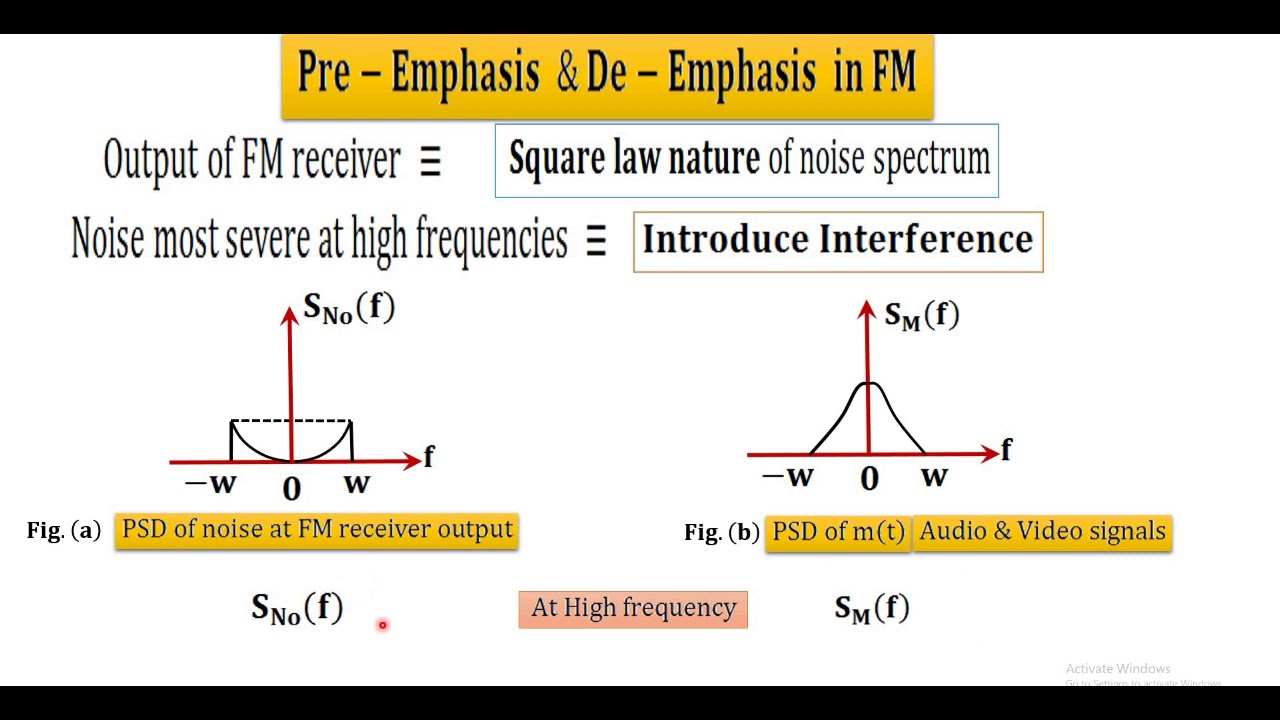Electrical Engineering Notes On – Pre-emphasis And De-emphasis – For W.B.C.S. Examination.
The pre-emphasis and de-emphasis idea can be used on VHF FM because the background noise is more noticeable towards the treble end of the audio spectrum, where it can be heard as a background hiss.Continue Reading Electrical Engineering Notes On – Pre-emphasis And De-emphasis – For W.B.C.S. Examination.
To overcome this it is possible to increase the level of the treble frequencies at the transmitter. At the receiver they are correspondingly attenuated to restore the balance. This also has the effect of reducing the treble background hiss which is generated in the receiver.
The process of increasing the treble signals is called pre-emphasis, and reducing the in the receiver is called de-emphasis. The rate of pre-emphasis and de-emphasis is expressed as a time constant. It is the time constant of the capacitor-resistor network used to give the required level of change. In the UK, Europe and Australia the time constant is 50 µs whereas in North America it is 75 µs.
VHF FM receivers have the de-emphasis circuitry – consisting of a simple CR network built into the circuitry immediately after the FM demodulator. In this way it is not incorporated into an amplifier that may be used for other audio sources that would not require the de-emphasis applied to VHF FM transmissions.
Pre-emphasis: The noise suppression ability of FM decreases with the increase in the frequencies. Thus increasing the relative strength or amplitude of the high frequency components of the message signal before modulation is termed as Pre-emphasis. The Fig3 below shows the circuit of pre-emphasis.
De-emphasis: In the de-emphasis circuit, by reducing the amplitude level of the received high frequency signal by the same amount as the increase in pre-emphasis is termed as De-emphasis. The Fig4. below shows the circuit of de-emphasis.
- The pre-emphasis process is done at the transmitter side, while the de-emphasis process is done at the receiver side.
- Thus a high frequency modulating signal is emphasized or boosted in amplitude in transmitter before modulation. To compensate for this boost, the high frequencies are attenuated or de-emphasized in the receiver after the demodulation has been performed. Due to pre-emphasis and de-emphasis, the S/N ratio at the output of receiver is maintained constant.
- The de-emphasis process ensures that the high frequencies are returned to their original relative level before amplification.
- Pre-emphasis circuit is a high pass filter or differentiator which allows high frequencies to pass, whereas de-emphasis circuit is a low pass filter or integrator which allows only low frequencies to pass.
Please subscribe here to get all future updates on this post/page/category/website


 Toll Free 1800 572 9282
Toll Free 1800 572 9282  mailus@wbcsmadeeasy.in
mailus@wbcsmadeeasy.in



















































































































